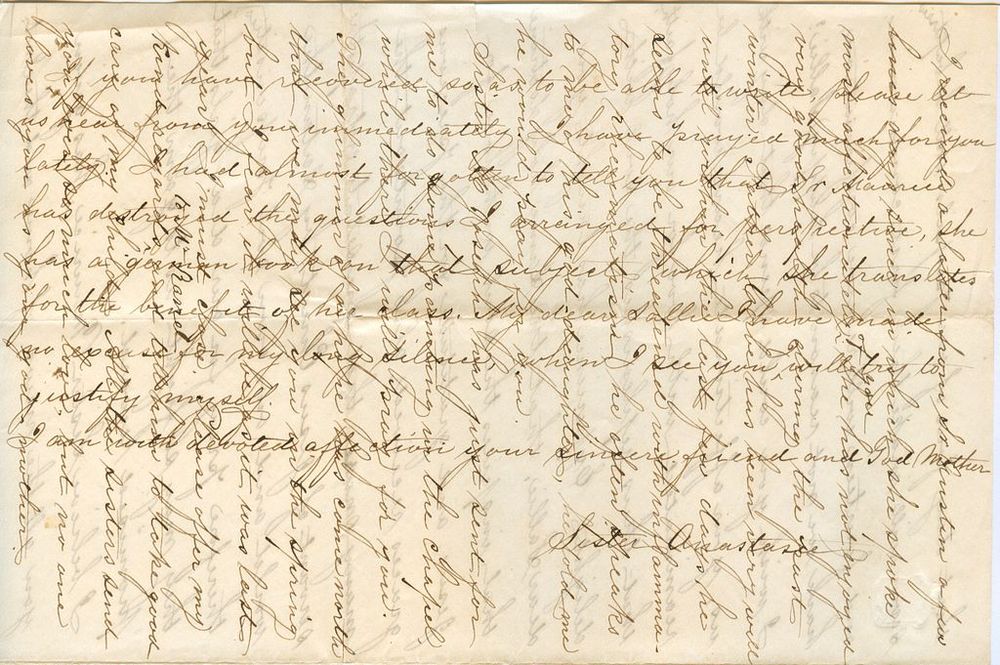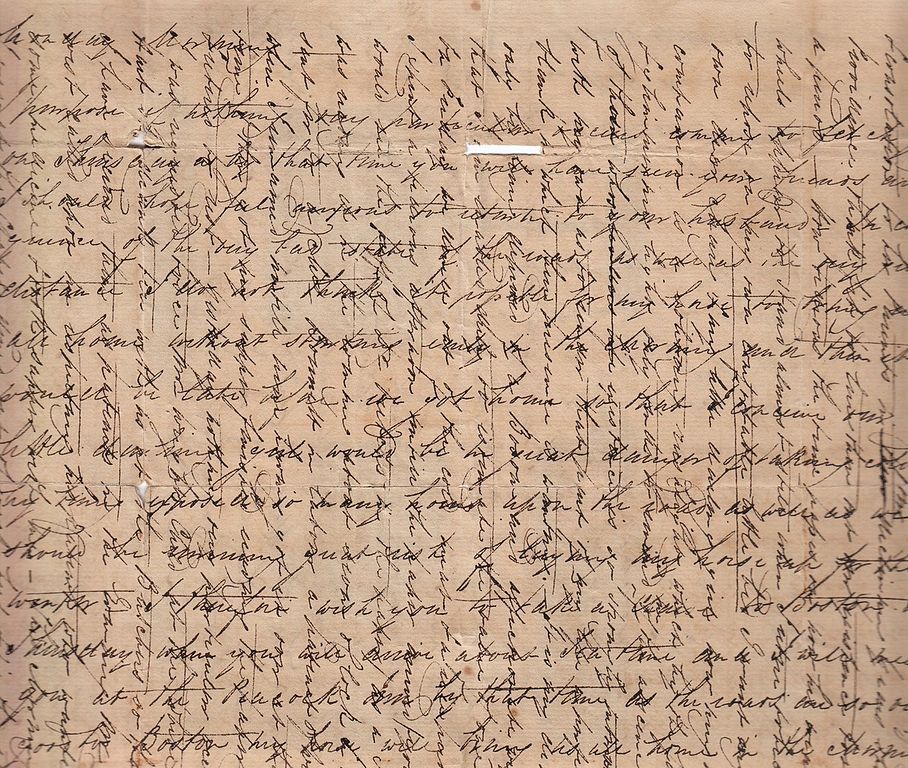Back in the 1800s, when both paper and postage were expensive (the cost of posting a letter depended on how many sheets of paper you used), it was common among folks to write on a sheet of paper the regular way, and once they had run out of room, turn the paper sideways and keep writing. The practice was called cross-writing or cross-hatching.
A crossed letter might seem illegible at first, but once you become familiar with it you adjust and learn to ignore the script across. Still, a crossed letter was not enjoyable to read, even in its heyday. In his essay Eight or Nine Wise Words about Letter-Writing, noted author Lewis Carroll wrote: “When you get to the end of a notesheet, and find you have more to say, take another piece of paper—a whole sheet, or a scrap, as the case may demand: but whatever you do, don’t cross! Remember the old proverb Cross-writing makes cross reading.”

A cross letter written by Mother Anastasie Brown (1826-1918). Photo: Wikimedia

Photo: Wikimedia

An extreme example of cross-writing. This letter written by French naturalist Francis de la Porte was written in three directions —horizontal, vertical, and diagonal. Mary Markey of the Smithsonian Institution Archives calls it “the most illegible document of my archival career,” Photo: Smithsonian Institution Archives

Photo: Wikimedia












Comments
Post a Comment